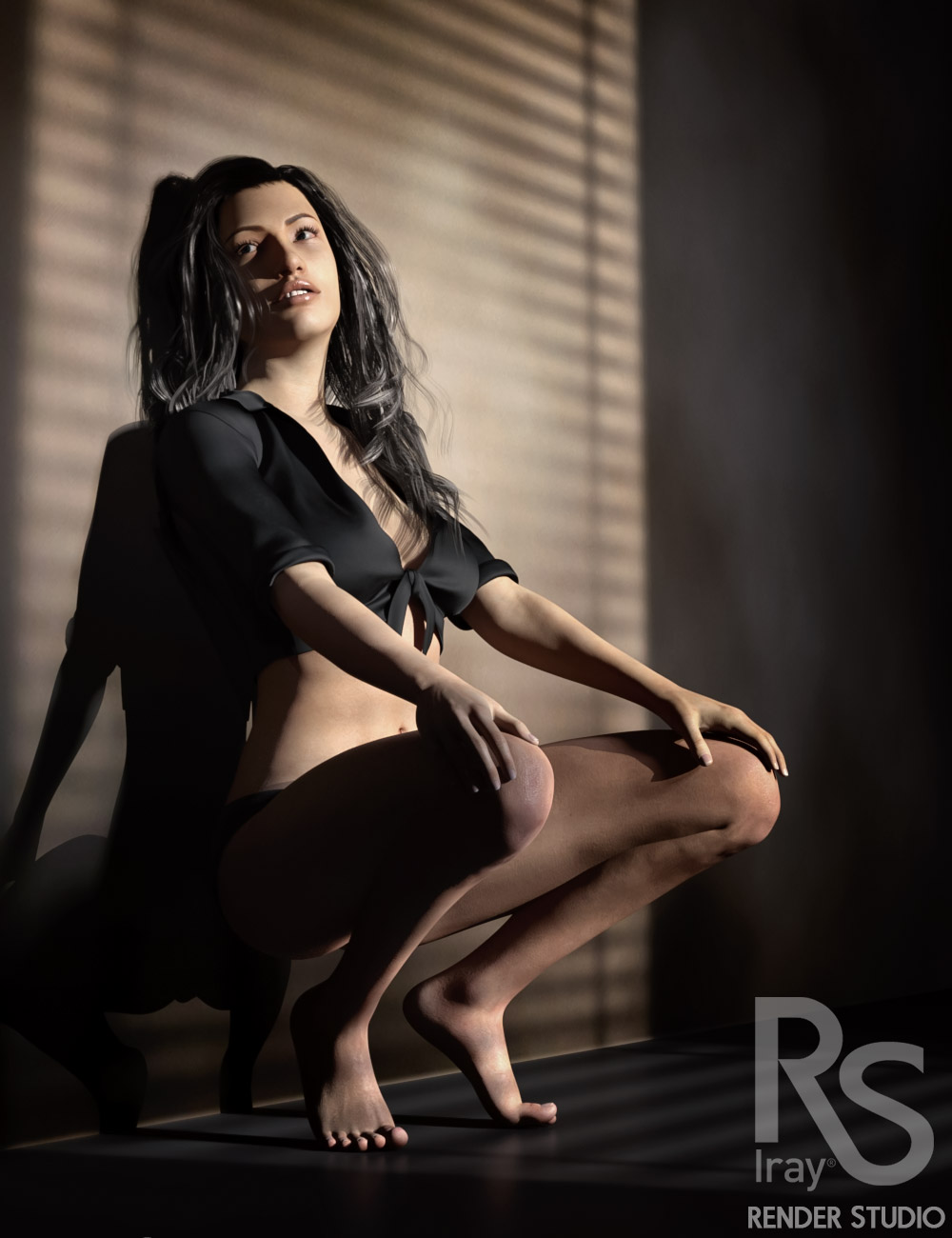


Chromatic skins out of the box are the easiest to tweak because they already have the necessary SSS map (though advanced users can go even further and build a new SSS map or tweak the existing one for even more detail, something I will cover in another tutorial).Ĭonverting Monochromatic SSS to Chromatic SSS
#Daz studio iray render skin#
If you try to lighten the skin by dropping the translucency weight, you’ll lose that ‘meat’ and the skin will end up looking flat. The reason for this is that Chromatic skin relies on the translucency color map, or the ‘meat map’ as I call it, to shine through from beneath the outer base color layer. This can be tweaked slightly, but if you need to lighten or darken a skin drastically, I would recommend finding a different skin that starts out where you want it in terms of tone, or go the direct route of editing the maps manually in Photoshop (advanced users). And if you scroll down on the surfaces panel, you’ll see the word ‘Chromatic’ listed under SSS Mode.Ĭhromatic skin typically uses a much higher translucency weight (.75 or higher) and it is harder to lighten or darken simply by adjusting. The translucency color itself should (in most cases) be white (this isn’t always the case for spectral rendering, but again, this article will only cover basic rendering). You will likely see either an exact duplicate of the base color map slotted into the translucency color, or a slightly lightened version of the base color map.

(I’ll try to stick with the super popular base figures that pretty much everybody has so you can follow along exactly.) Chromatic
#Daz studio iray render how to#
I will be showing you how to convert a Monochromatic skin, such as Vicky 7, over to Chromatic SSS and apply my tweaks. Monochromatic skin can be converted to Chromatic skin with some work, and that work does involve Photoshop (or another photo editing program that can use layers, such as Gimp). 5) and the general rule of thumb is that it can be lightened or darkened by adjusting that slider (lower for lighter, higher for darker, etc). Monochromatic skin typically uses a lower translucency weight (.3 to. And if you scroll down on the surfaces panel, you’ll see the word ‘Mono’ listed under SSS Mode. You’ll also see a rather tomato-inspired red set for the color itself (in most cases). You will see a greyscale map slotted into the translucency color. So how do you tell which is which? It’s really easy, but you’ll need to roll up your sleeves a bit and open up the surfaces tab (If you’re never looked at the surfaces tab, or are unfamiliar with it, you’ll be digging into it here!): Monochromatic Now, what is the difference between the two? Well, I honestly couldn’t tell you, other than the fact that they behave completely differently, and that Chromatic SSS, when set up correctly, appears to behave more naturally in terms of light reflection than Monochromatic SSS. Newer Iray Uber skins, such as those found on G8 (and G8.1) characters, use a type of SSS called Chromatic. Older Iray Uber skins, such as those found on G3 and a very small amount of G2 characters, use a type of SSS called Monochromatic. Skin is translucent, so it’s only natural that we’d see things like veins and, well, meat beneath it. To put it simply, think of subsurface scattering as the way light shines through the skin. The first step is understanding what type of skin you are starting with, and that really boils down to SSS (subsurface scattering). Monochromatic vs Chromatic Iray Uber Skin For comparison, here is an example with Vicky 8.1 with my Iray Uber settings. If folks enjoy this article, I will do a write-up of my tweaks translated to Spectral Rendering at a later date. For the purposes of this article, due to length, I will be sticking with basic rendering. Like I said, I’ve noticed that Spectral rendering works better with some skins than others. Is it really worth it? That’s up to you to decide. It also can add exponentially to your render times, even with the same exact lighting. Well, they will…but they require different SSS settings to not look like muddy, green, flat…blech. The tweaks I will be going over won’t work with Spectral Rendering. The downside is that it has a particular tendency to make skin out of the box look like muddy, green, flat…blech. It is supposed to be more actuate in terms of how it bounces light around the objects in the scene, some scenes more than others. It depends on the scene and the skin I’m working with. A lot of folks don’t know what it is and a lot of folks don’t use it. One other item of note is Spectral Rendering.


 0 kommentar(er)
0 kommentar(er)
